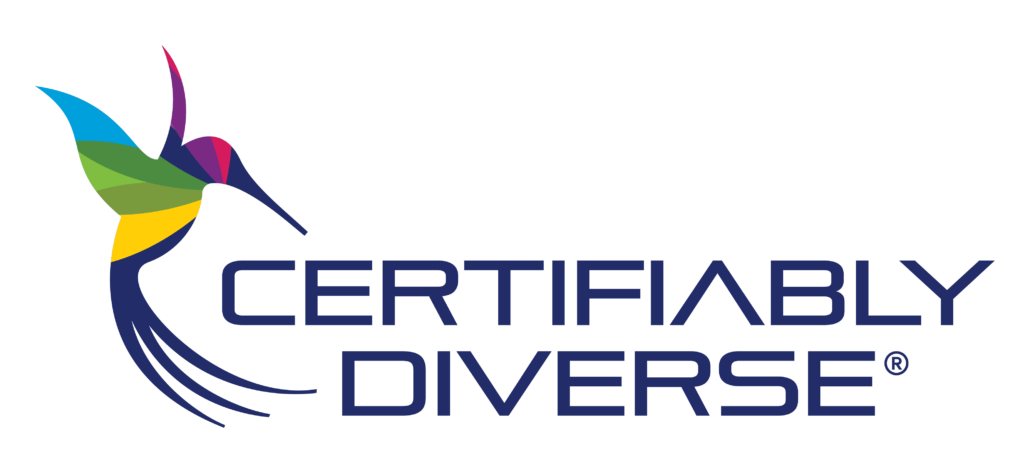Building a diverse organization — one that better represents its customers and the broader public — isn’t only the right thing to do. It’s also good business.
That’s the conclusion of a McKinsey study establishing a clear correlation between workplace diversity and financial performance.
Pulling data from North America, Latin America, and the United Kingdom, McKinsey found that companies in the top quartile of racial and ethnic diversity metrics were 35% more likely to show financial results above their respective national medians. Companies in the top quartile of gender diversity metrics were 15% more likely to show above-average financial results. In the United States specifically, earnings before interest and taxes rose 0.8% for every 10% increase in racial and ethnic diversity on senior leadership teams.
It seems clear that diverse organizations are stronger organizations. The next question: How can business leaders, especially in small and midsize firms, work efficiently and urgently to increase and amplify diversity?
These five tools and strategies may help.
1. A Vendor Management System That Endorses Supplier Diversity
Truly diverse organizations must have diverse supply chains.
Vendor management tools like Certifiably Diverse can help. Built around a comprehensive intelligence solution called the BuyerSmartHub, Certifiably Diverse empowers users to find new diverse suppliers, manage existing supplier relationships and hold current vendors accountable, maintain diversity certification and compliance throughout the business relationship lifecycle, and gain granular visibility with thorough reporting tools.
Supplier diversity tools don’t only help businesses reach their own vendor representation goals. They provide enterprises with the tools they need to hold the entire supply chain accountable for reaching those goals. The more businesses that choose to use them, the more accountable that supply chain becomes — and the closer “diversity and inclusion” gets to becoming more than just the buzzword du jour.
2. A Holiday Calendar That’s Flexible and Inclusive
Don’t ditch the traditional 10-holiday business calendar. Definitely don’t make your employees work on Thanksgiving or Independence Day, problematic as these holidays might be for some.
But do make your company calendar more inclusive with a “floating holiday” schedule. Per SHRM’s helpful floating holiday policy template, the typical arrangement allows for two “bonus” holidays in addition to regularly scheduled company days off. Employees can use floating holidays to take time off for religious or cultural celebrations, employee birthdays, or recognized state or federal holidays that the company doesn’t observe.
The benefits of floating holidays should be clear. Most companies don’t officially recognize non-Christian religious celebrations, for example, even those with multicultural workforces. And, if nothing else, everyone deserves the day off on their birthday.
3. A Workplace Chat Solution That Enables Cross-Cultural Connection and Creates Safe Spaces
Countless employers already use workplace chat suites to manage communication between employees. These solutions are efficient, cost-effective, and scalable.
They can also amplify and celebrate diversity within the organizations that use them. Solutions like Slack allow near-endless “channel” permutations. This enables employers to carve out spaces for thoughtful, even difficult conversations around diversity, allows the creation of “safe spaces” for workers based on identity or affinity, and can help team members organize and scale diversity-related initiatives.
The possibilities, like the permutations, are nearly endless. But one thing is clear: Workplace diversity is much easier to talk about (and organize around) in a virtual chat environment.
4. Hiring Software That Captures Nuance
Not all recruiting and onboarding platforms have the same commitment to workforce diversity. Choose a solution that’s built around the principle that diverse teams really are stronger — and empowers hiring managers to hire accordingly.
Canvas is a great example of a recruiting software suite that walks the walk. Built around self-reported demographic and identity data, it’s designed to give hiring managers granular insight into who they’re recruiting and hiring and how those decisions fit into broader workforce representation goals.
Canvas data is much more detailed and insight-rich than demographic data collected by, say, the U.S. Census Bureau. The platform makes more than 75 data points (and counting) available to hiring managers, covering “demographic, experiential, and cognitive diversity.” And it enables sophisticated goal-setting and tracking to keep hiring campaigns on track.
5. A Formal Diversity and Anti-Bias Training Program
Even the best hiring and vendor diversity platforms can’t completely eradicate unconscious bias on their own. As difficult as it may be to admit, that’s best done with external assistance from diversity and inclusion professionals.
A single “diversity day” won’t cut it. Wringing out unconscious biases developed over the course of decades takes time and commitment. The first step is to retain a human resources consulting firm that specializes in anti-bias work–but make no mistake–the real heavy lifting must be done by managers and employees themselves over time spans measured in months, if not years.
Diverse Organizations Are Stronger Organizations
As we’ve seen, diverse organizations tend to be stronger, more resilient, and more profitable.
They also tend to do better at attracting top performers — the sorts of employees they need to retain to achieve long-term growth and profitability goals.
A Glassdoor survey from September 2020 finds that more than three-quarters of job-seekers report, “A diverse workforce is an important factor when evaluating companies and job offers.” About 80% of Black, Latinx, and LGBTQ job-seekers feel the same way.
And job-seekers are quick to recognize when companies don’t back up easy talk of diversity and inclusion with action. Glassdoor found that nearly half of Black and Latinx employees have quit a job after witnessing discrimination in the workplace, and approximately one-third of all job-seekers simply would not apply to jobs where workplace diversity isn’t evident.
Clearly, building a diverse organization — or amplifying diversity in an already-representative company — is no longer a “nice to have.” It’s vital for any business that wants to thrive, or even survive, in the years ahead.
Fortunately, we have the tools to build and amplify diverse workforces. But it’s on us to use them. Are you ready to lead an organization that looks more like the people it serves?
Source – HeraldKeepers
Note: The Heraldkeepers News Department was not involved in the creation of this content.
If you have any problem with this press release? Contact the source provider Heraldkeepers.com, you can contact them here.
Read more: https: //www.digitaljournal.com/pr/5-tools-you-didnt-know-about-to-amplify-diversity-in-your-business#ixzz70QRt39db

